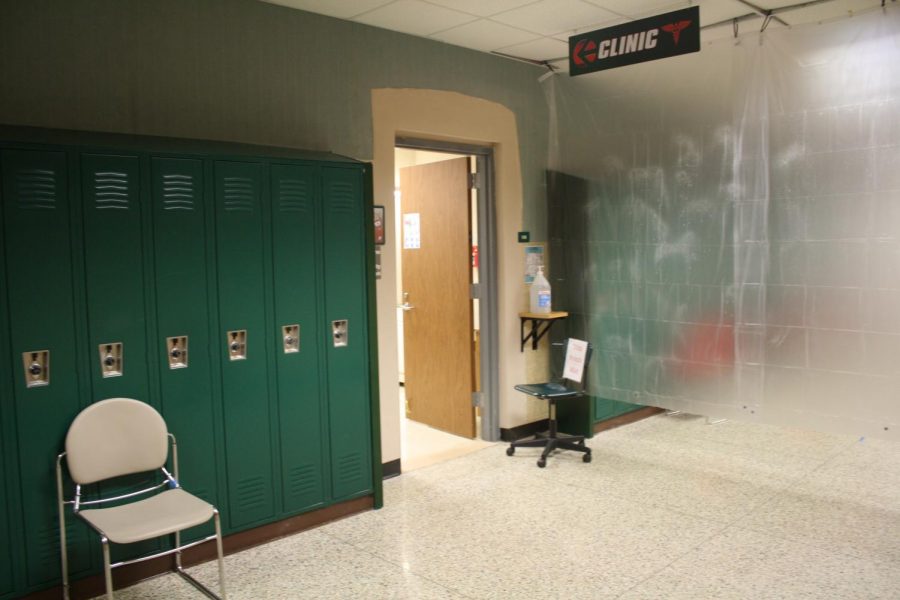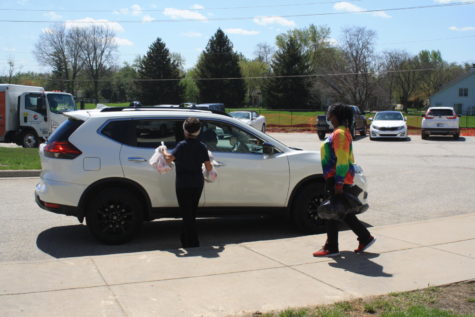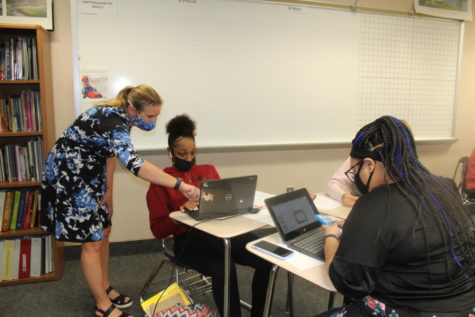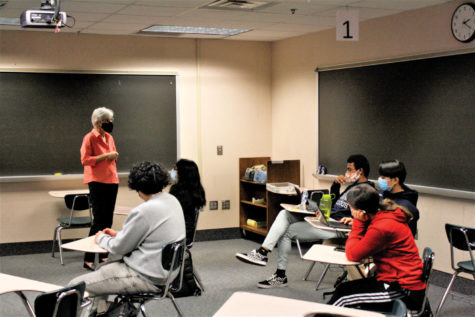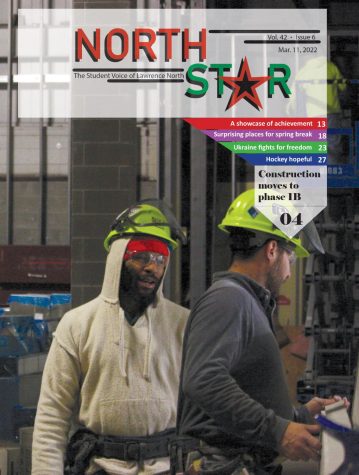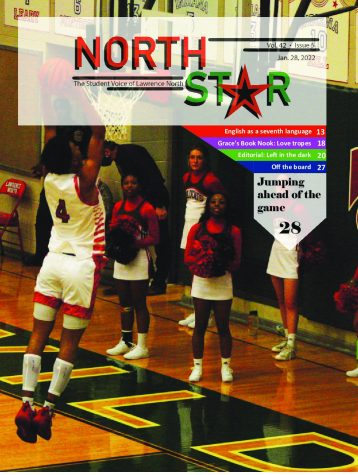Navigating COVID-19 in schools
Senior Addison Norton was working at a camp this summer when she learned of her exposure to COVID-19. She soon began developing symptoms and tested positive for COVID-19.
“I was symptomatic. I was tired, sore, had headaches, was dizzy, and coughed a little at night,” Norton said.
These were the symptoms Norton had over the summer when she had COVID-19. In addition to Norton’s symptoms the Indiana Department of Health lists the following as COVID-19 symptoms: temperature of 100.4 or higher, sore throat, new uncontrolled cough that causes difficulty breathing, diarrhea, nausea or vomiting, abdominal pain, new onset of severe headache especially with a fever, and new loss of taste or smell.
“If you’re worried you might be having COVID symptoms take it seriously but don’t panic,” Norton said.
If students experience symptoms like these while at school they will need to ask their teacher if they can visit the nurses office. Due to construction the nurses office is no longer up front it is now by the Little Theater.
“As you may know that front hallway is no more, I usually tell people it’s just past the Little Theater,” Nurse Valorie Gelwicks said.
When students arrive at the nurses office, they will need to stop at the door and knock on the chair that is outside the office door. This will let the nurses know someone is outside and needs assistance. The nurses will ask about the students symptoms and decide what steps to take next. If they decide to send students home they will have their parent or guardian pick them up at door 16. This is the semi circle entrance by the stoplight on the south side of the building.
“My advice would be to not overreact or freak out just because you have COVID or have been exposed. Listen to your body and stay hydrated,” Norton said.
If someone tests positive, the teachers and administrators will do a close contact search and find people who were near them in school, those people will then have to quarantine for at least 14 days. Most people confuse quarantine and isolation.
“Quarantine is used for people that are not ill, they have no symptoms at the time. People that are ill are isolating. I know this can be confusing,” Gelwicks said.
Quarantine is for people who have been exposed to someone that tested positive but have no symptoms. Isolation is for people who tested positive. Quarantine lasts 14 days, while isolation lasts 10 days.
“The interesting thing about this COVID is that teenagers have much more mild symptoms than adults. So it’s tricky to try to identify people who could have very light symptoms but could still be positive. We’re trying to be pretty particular. We want kids to only come to school if they are really healthy. Just stay home if you are not because it’s just not worth it, especially since you can do virtual school,” Gelwicks said.
According to Gelwicks, there are two different isolation sections for students that have symptoms when at school. One isolation room outside of the nurses office, and one in the back of the office. Even though these procedures are new, they are in place to protect the staff and students.
“In my personal opinion, I feel like I no longer care about all of these procedures for myself. I’ve had COVID and I was fine. In fact of the 50ish people I knew who had it around the same time I did, only one was in the hospital for just a few days and everyone recovered just fine,” Norton said.
As of September 17th, 2020, there have been 3,472 deaths due to COVID-19.
“On the other hand, I recognize that these procedures aren’t for me but are in place for others. I choose to follow the rules and guidelines as a sign of respect for those in authority regardless of if I agree with them and as an opportunity to show compassion and love to others,” Norton said.



